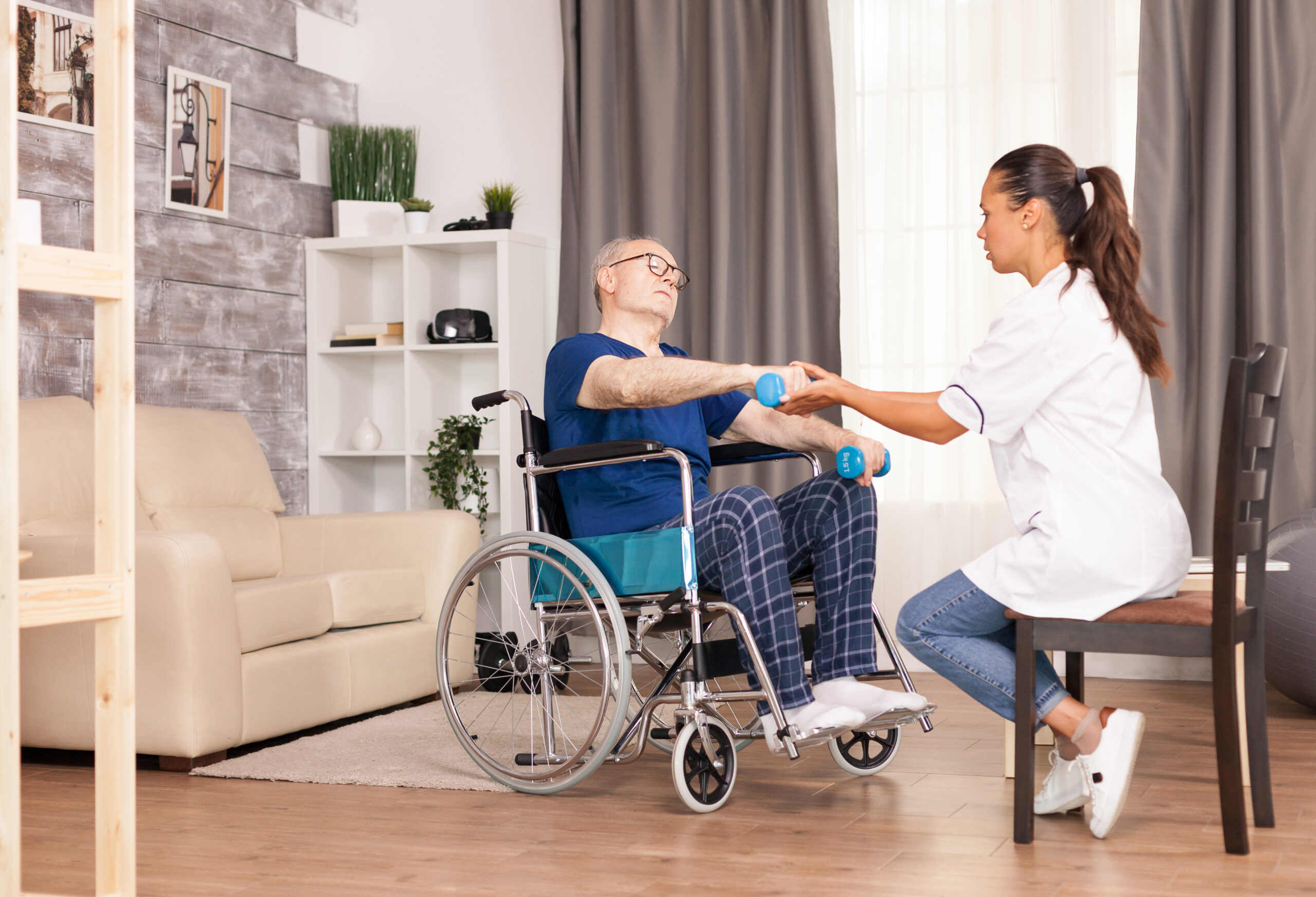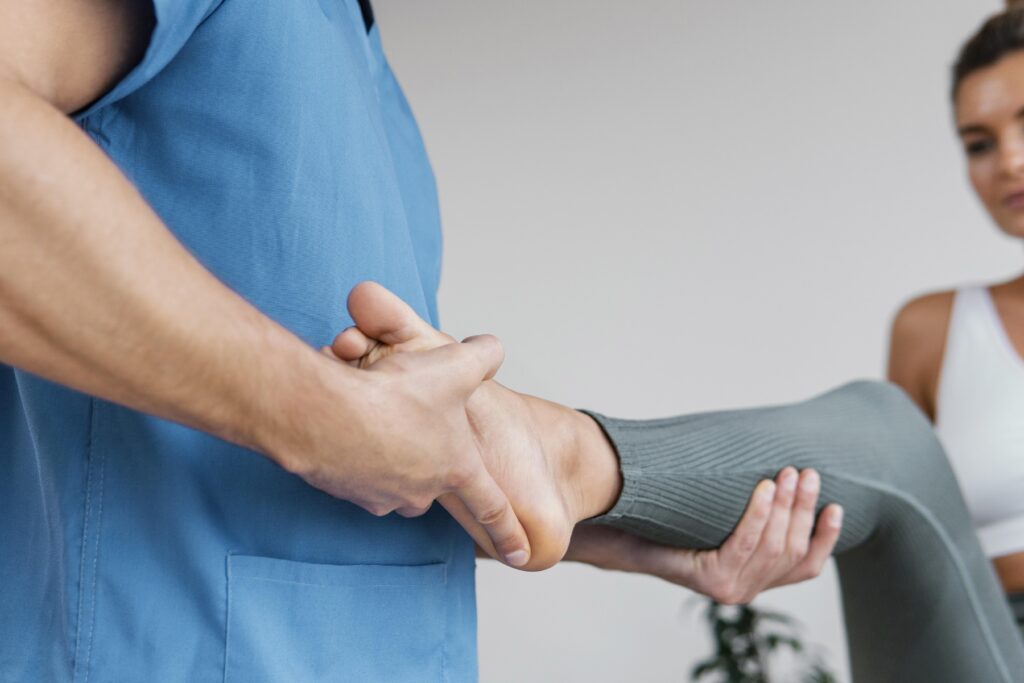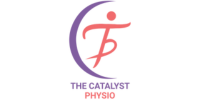Knee Pain Physiotherapy at Home: A Comprehensive Guide
Knee pain can significantly impact daily activities, making even simple tasks challenging. Whether it’s due to injury, overuse, or underlying medical conditions, finding relief is crucial for maintaining mobility and quality of life. In this article, we’ll explore the concept of Knee Pain physiotherapy at home as an effective solution for managing knee pain.
Introduction
Knee pain is a common complaint that can arise from various factors such as injury, arthritis, or overuse. It can range from mild discomfort to severe debilitating pain, affecting mobility and overall well-being. Knee Pain Physiotherapy at home offers a convenient and accessible approach to addressing knee pain, allowing individuals to receive personalized care in the comfort of their own space.

Understanding
Understanding Knee Pain Physiotherapy at home is essential for effectively managing and addressing this common ailment. Here’s an overview:
Knee Pain Physiotherapy at home refers to discomfort or soreness experienced in or around the knee joint. It can range from mild to severe and may be accompanied by swelling, stiffness, and reduced mobility. Knee pain can result from various factors, including:
- Injuries: Traumatic injuries such as ligament tears, meniscus tears, and fractures can cause sudden and severe knee pain. These injuries often occur during sports activities, accidents, or falls.
- Overuse: Repetitive movements or overuse of the knee joint, such as running, jumping, or kneeling, can lead to strain and inflammation of the surrounding tissues, resulting in chronic knee pain.
- Degenerative Conditions: Conditions such as osteoarthritis, rheumatoid arthritis, and gout can cause gradual deterioration of the knee joint, leading to pain, swelling, and stiffness over time.
- Mechanical Issues: Structural abnormalities in the knee joint, such as misalignment, maltracking, or instability, can result in abnormal stress on the joint surfaces, causing pain and dysfunction.
- Medical Conditions: Certain medical conditions, such as bursitis, tendinitis, and patellofemoral syndrome, can cause inflammation and irritation of the soft tissues around the knee joint, resulting in pain and discomfort.
Understanding the underlying cause of Knee Pain Physiotherapy at home is crucial for determining the most appropriate treatment approach. Diagnosis typically involves a comprehensive evaluation by a healthcare professional, including a physical examination, imaging tests (such as X-rays or MRI), and sometimes, diagnostic injections.
Treatment for Knee Pain Physiotherapy at home may include:
- Rest and Activity Modification: Avoiding activities that exacerbate pain and modifying movement patterns to reduce stress on the knee joint.
- Physical Therapy: A tailored exercise program designed to strengthen the muscles around the knee, improve flexibility, and enhance joint stability.
- Medications: Over-the-counter pain relievers, nonsteroidal anti-inflammatory drugs (NSAIDs), and corticosteroid injections may help alleviate pain and inflammation.
- Bracing or Supportive Devices: The use of knee braces, orthotics, or supportive footwear can provide stability and reduce strain on the knee joint.
- Invasive Interventions: In severe cases, surgical procedures such as arthroscopy, ligament reconstruction, or joint replacement may be necessary to address structural issues and relieve pain.
In addition to treatment, lifestyle modifications such as maintaining a healthy weight, practicing proper body mechanics, and staying physically active can help prevent Knee Pain Physiotherapy at home and promote long-term joint health.
If you’re experiencing persistent Knee Pain Physiotherapy at home or have concerns about your knee health, consult with a healthcare professional for a proper evaluation and personalized treatment plan. Early intervention and proactive management are key to minimizing pain and maximizing function in individuals with knee pain Physiotherapy at home.
What is Physiotherapy?
Physiotherapy, also known as physical therapy, is a healthcare profession focused on restoring movement and function to individuals affected by injury, illness, or disability. It utilizes various techniques such as exercise, manual therapy, and education to promote healing, alleviate pain, and improve quality of life. Physiotherapists work closely with patients to develop personalized treatment plans tailored to their specific needs, addressing a wide range of conditions affecting muscles, bones, joints, and neurological systems. The goal of physiotherapy is to optimize physical function, enhance mobility, and facilitate recovery, enabling individuals to achieve their maximum potential and lead active, independent lives.
Advantages of Physiotherapy at Home
Knee Pain Physiotherapy at home offers numerous advantages over traditional clinic-based therapy, providing individuals with convenience, accessibility, and personalized care tailored to their specific needs. In this comprehensive guide, we will explore the various benefits of Knee Pain physiotherapy at home in detail.
- Convenience: One of the primary advantages of Knee Pain physiotherapy at home is the convenience it offers. Rather than traveling to a clinic or hospital for appointments, individuals can receive therapy in the comfort of their own homes. This eliminates the need for transportation arrangements and allows for greater flexibility in scheduling sessions.
- Accessibility: Knee Pain Physiotherapy at home is particularly beneficial for individuals with mobility issues or transportation barriers. Bringing therapy directly to the patient’s home environment ensures access to essential rehabilitation services without the need to navigate external facilities.
- Cost-Effectiveness: Home-based physiotherapy can be more cost-effective than clinic-based therapy, as it eliminates expenses associated with transportation, parking, and clinic fees. Additionally, patients may have access to more affordable options for equipment and supplies needed for therapy.
- Personalized Care: Home-based physiotherapy allows for personalized care tailored to the individual’s specific needs and goals. Physiotherapists can assess the patient’s home environment and develop treatment plans that address unique challenges and opportunities for rehabilitation.
- Comfort and Familiarity: Being in familiar surroundings can enhance comfort and relaxation during therapy sessions. Patients may feel more at ease in their own homes, which can positively impact their overall experience and engagement in the rehabilitation process.
- Family Involvement: Physiotherapy at home provides an opportunity for family members or caregivers to actively participate in the rehabilitation process. This involvement can promote collaboration, support, and encouragement, leading to better outcomes for the patient.
- Continuity of Care: Home-based physiotherapy facilitates continuity of care by allowing patients to receive consistent, ongoing treatment in familiar surroundings. This continuity can be particularly beneficial for individuals with chronic conditions or long-term rehabilitation needs.
- Reduced Risk of Infection: Home-based physiotherapy can help reduce the risk of exposure to infectious diseases, especially during times of heightened concern such as pandemics. By minimizing contact with external environments, patients can maintain a safe and hygienic rehabilitation environment.
- Individualized Rehabilitation: In-home physiotherapy allows for more individualized rehabilitation programs tailored to the patient’s specific needs, preferences, and goals. Therapists can incorporate activities and exercises that are relevant and meaningful to the patient’s daily life and functional abilities.
- Promotion of Independence: Home-based physiotherapy encourages independence and self-management skills by empowering patients to take an active role in their rehabilitation. Patients learn techniques and strategies that they can apply independently, fostering confidence and autonomy.
- Improved Compliance and Adherence: The convenience and accessibility of home-based physiotherapy can enhance patient compliance and adherence to treatment plans. Patients are more likely to participate consistently in therapy when it is convenient and integrated into their daily routines.
- Holistic Approach: Home-based physiotherapy allows therapists to consider the patient’s home environment, lifestyle, and social support network when developing treatment plans. This holistic approach addresses not only physical limitations but also psychosocial factors that may impact recovery.
- Flexible Scheduling: Home-based physiotherapy offers flexibility in scheduling appointments, allowing patients to choose times that are most convenient for them. This flexibility can accommodate busy schedules, work commitments, and other responsibilities.
- Emotional Support: Home-based physiotherapy provides an opportunity for therapists to build rapport and establish trust with patients in a comfortable and familiar setting. Therapists can offer emotional support, encouragement, and reassurance, which can be invaluable during the rehabilitation process.
- Long-Term Benefits: Home-based physiotherapy can have long-term benefits beyond the immediate rehabilitation period. Promoting independence, functional mobility, and overall well-being, can enhance quality of life and reduce the risk of future injuries or relapses.

Exercises for Knee Pain Relief
Physiotherapy exercises play a crucial role in relieving knee pain and improving function. Range of motion exercises help maintain flexibility and mobility in the knee joint. Strengthening exercises target the muscles surrounding the knee, providing support and stability. Stretching exercises can help alleviate tightness and improve flexibility.
Tips for Effective Knee Pain Physiotherapy at Home
To maximize the benefits of knee pain physiotherapy at home, it’s essential to create a conducive environment for rehabilitation. This includes setting aside dedicated space for exercises and ensuring the availability of necessary equipment. Setting realistic goals and expectations is also important, as progress may take time and consistency.
Safety Precautions
While knee pain physiotherapy at home is generally safe, it’s essential to take proper precautions to prevent injury. This includes using the correct technique during exercises, avoiding overexertion, and listening to your body’s signals. Monitoring pain levels is crucial, and any increase in pain should be addressed promptly. Additionally, exercises should be progressed gradually to avoid exacerbating symptoms.
Other Home Remedies for Knee Pain
In addition to physiotherapy exercises, several home remedies can help alleviate knee pain. RICE therapy, which stands for Rest, Ice, Compression, and Elevation, can help reduce inflammation and pain. Using supportive devices such as knee braces or orthotic inserts can provide additional support and stability. Furthermore, making dietary and lifestyle modifications, such as maintaining a healthy weight and avoiding activities that exacerbate pain, can also contribute to long-term knee health.
When to Seek Professional Help
While knee pain physiotherapy at home can be effective for managing mild to moderate knee pain, it’s essential to know when to seek professional help. Signs indicating the need for medical intervention include severe pain that persists despite conservative measures, swelling or redness that worsens over time, and difficulty bearing weight on the affected knee. Consulting a healthcare professional, such as a physiotherapist or orthopedic specialist, can help determine the underlying cause of knee pain and develop an appropriate treatment plan.
Conclusion
In conclusion, knee pain physiotherapy at home offers a practical and effective solution for managing knee pain. By incorporating exercises, safety precautions, and home remedies, individuals can alleviate symptoms, improve function, and regain quality of life. With proactive management and guidance from a qualified physiotherapist, knee pain can be effectively addressed, allowing individuals to enjoy an active and pain-free lifestyle.
FAQs
- How often should I do physiotherapy exercises at home?
- The frequency of home exercises may vary depending on individual needs and goals. Generally, it’s recommended to perform exercises at least 2-3 times per week, with rest days in between to allow for recovery.
- What is Back Pain Physiotherapy at Home?
- Back Pain Physiotherapy at Home is a personalized approach to addressing back pain through therapeutic exercises, stretches, and lifestyle adjustments conducted in the comfort of one’s home. It empowers individuals to actively participate in their recovery process. Read more.
- Are there any specific exercises I should avoid if I have knee pain?
- Certain high-impact or strenuous exercises may exacerbate knee pain and should be avoided. These include activities such as running, jumping, and deep squats. It’s essential to consult with a healthcare professional before starting any new exercise regimen.
- How long does it take to see results from physiotherapy at home?
- The timeframe for seeing results may vary depending on the severity of the knee pain and adherence to the treatment plan. Some individuals may experience improvements within a few weeks, while others may require longer-term rehabilitation.
- Is physiotherapy at home suitable for all ages?
- Yes, physiotherapy at home can benefit individuals of all ages, from children to seniors. However, the exercises and treatment approach may be modified based on age, mobility, and overall health status.
- What are the qualifications and experience required to become a sports physiotherapist in Delhi?
- To become a sports physiotherapist in Delhi, individuals typically need to fulfill specific qualifications and gain relevant experience. Firstly, aspiring sports physiotherapists must obtain a Bachelor’s Degree in Physiotherapy (BPT) from a recognized institution, which typically spans four to five years. Following this, pursuing a Master’s Degree or specialization in Sports Physiotherapy is advantageous, though not always mandatory. Additionally, obtaining a State Physiotherapy License from the Delhi Physiotherapy Council is essential for practicing in the region. Read More.
- How many physiotherapy sessions will I need?
- The number of sessions required depends on the nature and severity of your condition, as well as your response to treatment. Your physiotherapist will develop a treatment plan tailored to your specific needs and goals.
- Is physiotherapy painful?
- Physiotherapy techniques are generally not painful, although some discomfort may be experienced during certain exercises or manual therapy techniques. Your physiotherapist will work with you to ensure that treatment is comfortable and tolerable.
- Can physiotherapy help with chronic conditions like fibromyalgia or multiple sclerosis?
- Yes, physiotherapy can help manage symptoms and improve the quality of life for individuals with chronic conditions like fibromyalgia, multiple sclerosis, and others. Your physiotherapist will develop a tailored treatment plan to address your specific needs and goals.
- Are there any age restrictions for physiotherapy?
- Physiotherapy is suitable for individuals of all ages, from children to older adults. Whether you’re recovering from an injury, managing a chronic condition, or seeking to improve your overall mobility and function, physiotherapy can benefit people of any age group.
Dr. Priyanka Bharadwaj (Physiotherapist)
CB Home Physiotherapist: Dr Priyanka Bharadwaj is one of the best female physical therapy experts in Khanpur, Delhi. She offers Physiotherapy at home in Khanpur and nearby areas. With a well-established practice for home physiotherapy, she is an expert in the treatment of conditions such as Back Pain, Neck Pain, Knee Pain, Sciatica, Cervical Spondylosis, Disc Bulge, Frozen Shoulder, Arthritis, Osteoporosis, Muscle Weakness, Balancing Problems… Post-surgery rehab for Shoulder, Knee Surgery / TKR, Hip Replacement … and neurological issues like Stroke, Nerve Injuries, Bell palsy, Multiple Sclerosis, and Parkinson’s. Dr. Priyanka Bharadwaj has an overall experience of 2 Years in various hospitals & clinics.
Her main focus/expertise is in the field of General Physiotherapy but she has trained & worked across multiple specialties like General Physiotherapy, Pediatric Physiotherapy, Geriatric Physiotherapy, Vestibular Rehabilitation, Neurological Physiotherapy, Musculoskeletal Physiotherapy, Cardiovascular Physiotherapy, Pulmonary Physiotherapy, Sports Physiotherapy, Pre and Post Surgery, Rehabilitation, Dry Needling. She has experience working with a wide range of patients from children of small age to senior patients. Dr. Priyanka Bharadwaj is very compassionate and dedicated to patient well-being.
Qualification
Bachelor Of Physiotherapy
Manav Rachna International Institute of Research and Studies
Overall Experience in Years – 2
Connect with Us Online
Social Media:
Stay updated on our services, health tips, and community events by following us on Facebook. Connect with us, and join the conversation on how home care physiotherapy can contribute to a healthier lifestyle.
Online Form:
You can also fill out our online contact form on our website at The Catalyst Physio. Provide us with your details and inquiries, and we will get back to you promptly.
Your Health, Our Priority
At The Catalyst Physio, we prioritize your well-being. Whether you’re recovering from surgery, managing a chronic condition, or seeking preventive care, our dedicated team is committed to providing you with personalized, convenient, and transformative home care physiotherapy.
Contact us today, and let’s embark on the journey to optimal health together. Your well-being is our priority, and we look forward to being part of your path to recovery and sustained wellness.


